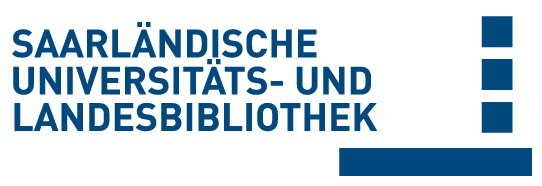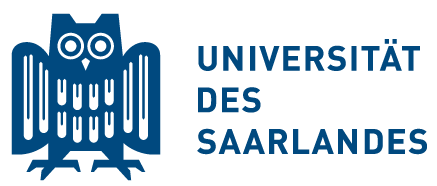Please use this identifier to cite or link to this item:
doi:10.22028/D291-45786 | Title: | In vivo biocompatibility of a new hydrophobic coated Al/Al2O3 nanowire surface on stents |
| Author(s): | Rentzsch, Axel Metz, Eva Mühl-Benninghaus, Ruben Maßmann, Alexander Bettink, Stephanie Scheller, Bruno Lemke, Lilia Awadelkareem, Ali Tomori, Toshiki Haidar, Ayman Laschke, Matthias W. Menger, Michael D. Aktas, Cenk Hannig, Matthias Pütz, Norbert Büttner, Thomas Scheschkewitz, David Veith, Michael Abdul-Khaliq, Hashim |
| Language: | English |
| Title: | Cardiovascular Revascularization Medicine |
| Volume: | 75 (2025) |
| Pages: | 31-38 |
| Publisher/Platform: | Elsevier |
| Year of Publication: | 2024 |
| Free key words: | In-stent restenosis Bare metal stent Innovation Optical coherence tomography |
| DDC notations: | 500 Science 610 Medicine and health |
| Publikation type: | Journal Article |
| Abstract: | Background: Intima proliferation and in-stent restenosis is a challenging situation in interventional treatment of small vessel obstruction. Al/Al2O3 nanowires have been shown to accelerate vascular endothelial cell proliferation and mi gration in vitro, while suppressing vascular smooth muscle cell growth. Moreover, surface modification of Al/Al2O3 nanowires with poly[bis(2,2,2-trifluoromethoxy)phosphazene (PTFEP) coating enables further advantages such as re duced platelet adhesion. Therefore, the study's goal was to compare the biocompatibility of novel Al/Al2O3 + PTFEP coated nanowire bare-metal stents to uncoated control stents in vivo using optical coherence tomography (OCT), quan titative angiography and histomorphometric assessment. Methods: 15 Al/Al2O3 + PTFEP coated and 19 control stents were implanted in the cervical arteries of 9 Aachen minipigs. After 90 days, in-stent stenosis, thrombogenicity, and inflammatory response were assessed. Scanning elec tron microscopy was used to analyse the stent surface. Results: OCT analysis revealed that neointimal proliferation in Al/Al2O3 + PTFEP coated stents was significantly re duced compared to control stents. The neointimal area was 1.16 ± 0.77 mm2 in Al/Al2O3 + PTFEP coated stents vs. 1.98 ± 1.04 mm2 in control stents (p = 0.004), and the neointimal thickness was 0.28 ± 0.20 vs. 0.47 ± 0.10 (p = 0.003). Quantitative angiography showed a tendency to less neointimal growth in coated stents. Histomorphometry showed no significant difference between the two groups and revealed an apparent inflammatory reaction surrounding the stent struts. Conclusions: At long-term follow-up, Al/Al2O3 + PTFEP coated stents placed in peripheral arteries demonstrated good tolerance with no treatment-associated vascular obstruction and reduced in-stent restenosis in OCT. These preliminary in vivo findings indicate that Al/Al2O3 + PTFEP coated nanowire stents may have translational potential to be used for the prevention of in-stent restenosis. |
| DOI of the first publication: | 10.1016/j.carrev.2024.08.017 |
| URL of the first publication: | https://doi.org/10.1016/j.carrev.2024.08.017 |
| Link to this record: | urn:nbn:de:bsz:291--ds-457864 hdl:20.500.11880/40232 http://dx.doi.org/10.22028/D291-45786 |
| ISSN: | 15538-389 |
| Date of registration: | 4-Jul-2025 |
| Description of the related object: | Supplementary data |
| Related object: | https://ars.els-cdn.com/content/image/1-s2.0-S1553838924006390-mmc1.docx |
| Faculty: | M - Medizinische Fakultät NT - Naturwissenschaftlich- Technische Fakultät |
| Department: | M - Chirurgie M - Innere Medizin M - Pädiatrie M - Radiologie M - Zahn-, Mund- und Kieferheilkunde NT - Chemie |
| Professorship: | M - Prof. Dr. Hashim Abdul-Khaliq M - Prof. Dr. Matthias Hannig M - Prof. Dr. Matthias Laschke M - Prof. Dr. Bruno Scheller-Clever M - Keiner Professur zugeordnet NT - Prof. Dr. David Scheschkewitz |
| Collections: | SciDok - Der Wissenschaftsserver der Universität des Saarlandes |
Files for this record:
| File | Description | Size | Format | |
|---|---|---|---|---|
| 1-s2.0-S1553838924006390-main.pdf | 534,32 kB | Adobe PDF | View/Open |
This item is licensed under a Creative Commons License


